The Art of Coffee Cupping: A Beginner's Guide to Tasting Like a Pro
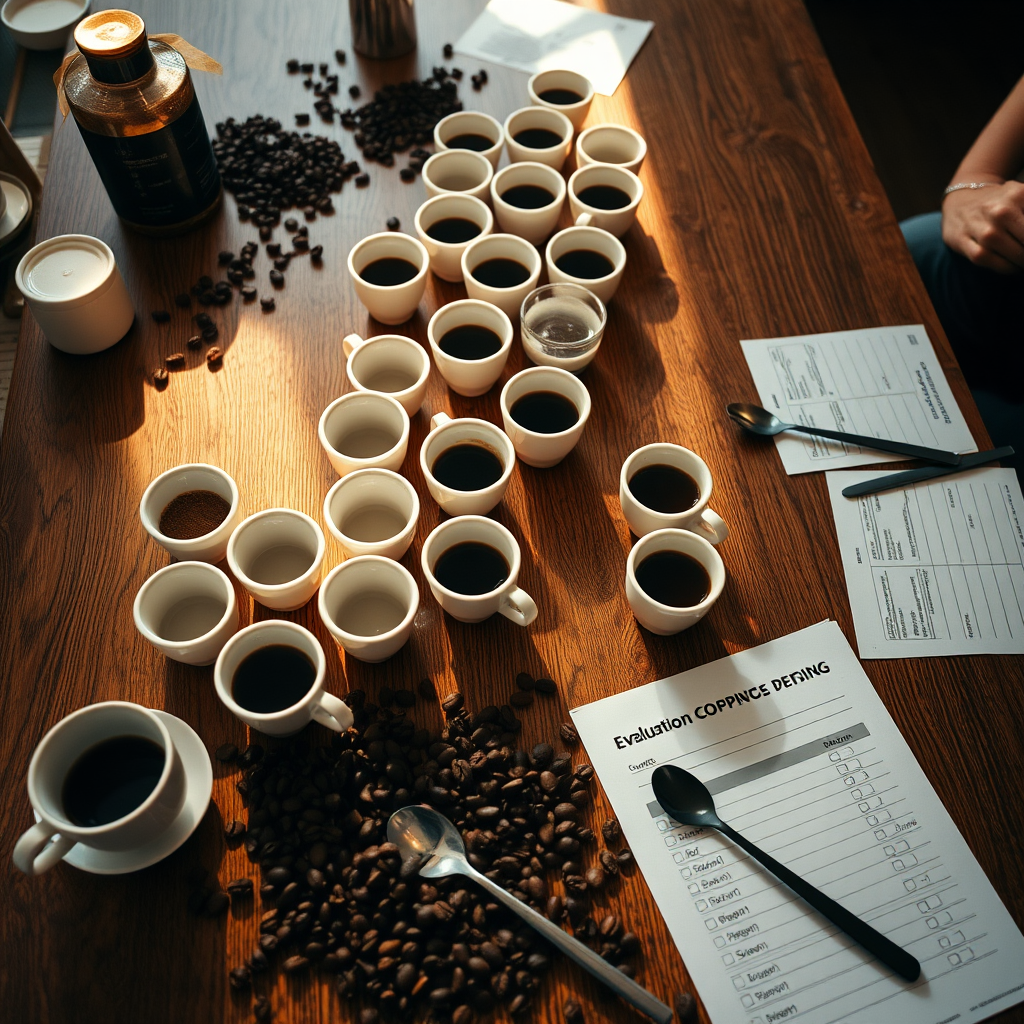
Coffee cupping is the professional method used by coffee experts worldwide to evaluate and compare different coffees. Whether you're a coffee enthusiast looking to deepen your appreciation or someone curious about the intricate world of coffee tasting, this comprehensive guide will transform your understanding of what's in your cup.
What is Coffee Cupping?
Coffee cupping is a standardized method of evaluating coffee quality, flavor, and aroma. Developed by the Specialty Coffee Association, this technique allows tasters to assess multiple coffees simultaneously under controlled conditions. The process involves brewing coffee using a specific ratio and method, then systematically tasting and scoring various attributes.
At syndicainr, we believe that understanding cupping fundamentals enhances every coffee lover's journey. This ancient practice, refined over decades, provides the foundation for how coffee professionals grade, buy, and blend coffees from around the world.
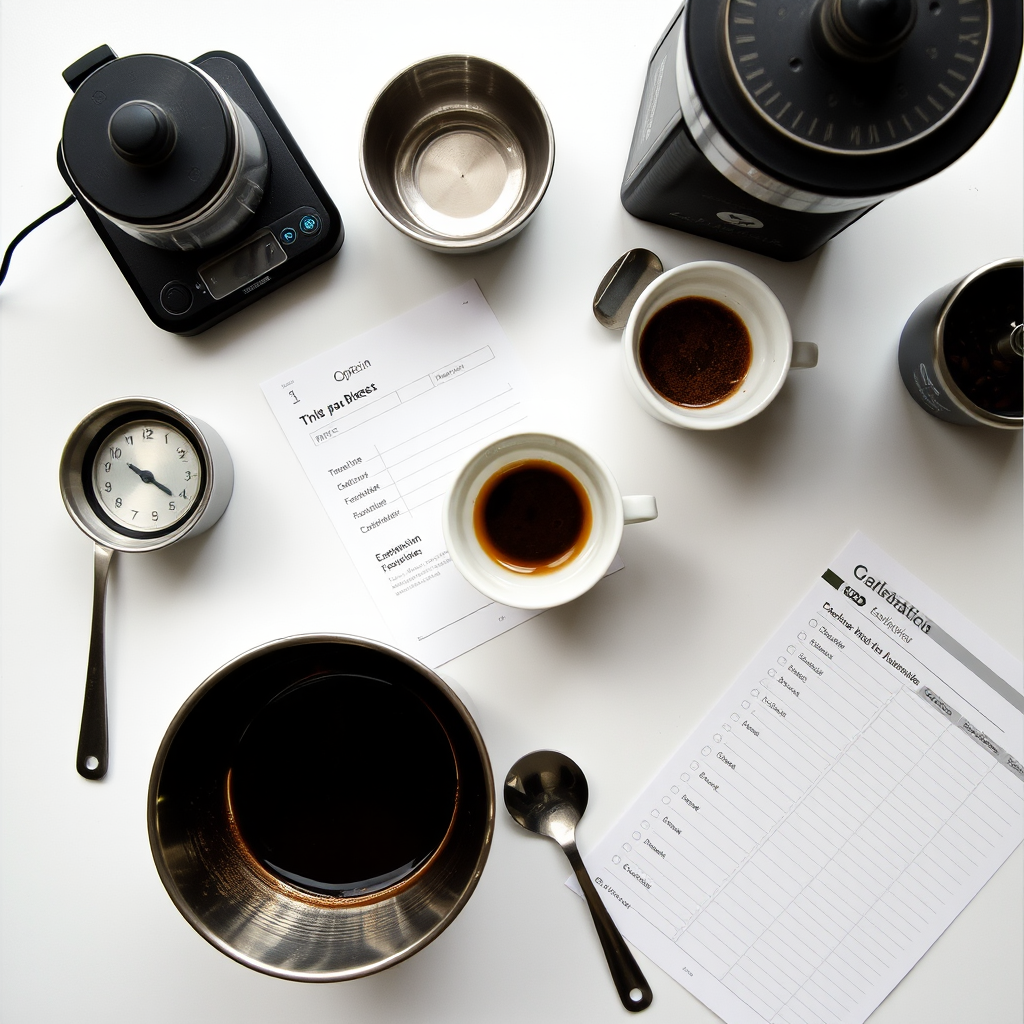
Essential Equipment for Coffee Cupping
Before diving into the cupping process, you'll need to gather the right equipment. While professional cupping labs have specialized tools, you can start with basic items found in most kitchens:
- Cupping bowls or glasses: 6-8 oz capacity, preferably white ceramic or glass
- Cupping spoons: Round, deep spoons (soup spoons work well)
- Coffee grinder: Burr grinder for consistent particle size
- Digital scale: Accurate to 0.1 grams
- Timer: For precise brewing timing
- Hot water: Heated to 200°F (93°C)
- Evaluation sheets: For recording your observations
The Step-by-Step Cupping Process
1. Preparation and Setup
Begin by setting up your cupping station in a well-lit, odor-free environment. Arrange your cupping bowls in rows, allowing space for easy movement between samples. Grind your coffee beans to a medium-coarse consistency, similar to sea salt. Use a ratio of 8.25 grams of coffee to 150ml of water for each sample.
2. Dry Fragrance Evaluation
Place the ground coffee in each bowl and immediately smell the dry fragrance. This first impression reveals the coffee's inherent aromatic qualities before water interaction. Take notes on intensity, character, and any distinctive scents you detect.
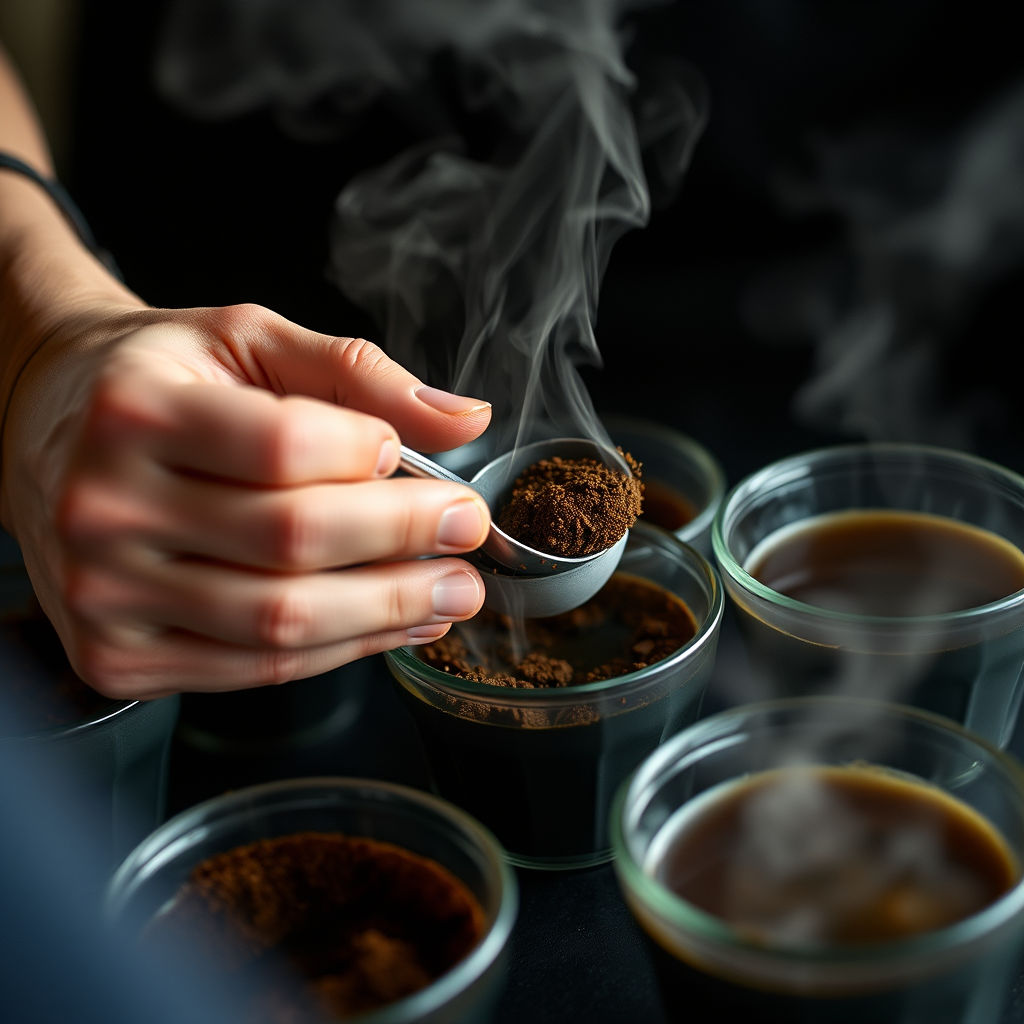
3. Adding Water and Wet Aroma
Pour hot water (200°F) over the grounds, saturating them completely. Start your timer for 4 minutes. After pouring, smell the wet aroma – this often reveals different characteristics than the dry fragrance. The interaction between water and coffee releases volatile compounds that create complex aromatic profiles.
4. Breaking the Crust
At exactly 4 minutes, use your cupping spoon to "break the crust" – the layer of grounds floating on the surface. Gently stir three times while inhaling deeply. This moment often provides the most intense aromatic experience of the entire cupping process.
5. Cleaning and Tasting
Remove any remaining grounds and foam from the surface using two spoons. Allow the coffee to cool for 8-10 minutes before tasting. The ideal tasting temperature is around 160°F (71°C), when flavors are most balanced and accessible.
Developing Your Palate: Key Flavor Categories
Professional cupping evaluates coffee across several key attributes. Understanding these categories will help you structure your tasting experience and develop a more sophisticated palate:
Acidity
The bright, tangy quality that adds liveliness to coffee. Can range from citrusy and wine-like to more subtle and balanced.
Body
The weight and texture of coffee in your mouth. Ranges from light and tea-like to full and syrupy.
Flavor
The overall taste impression combining sweet, sour, and bitter elements with specific flavor notes.
Aftertaste
The lingering flavors and sensations that remain after swallowing. Quality coffees have pleasant, lasting finishes.
Common Flavor Notes and How to Identify Them
Coffee flavors can be incredibly diverse, influenced by origin, processing method, roast level, and brewing technique. Here are some common flavor categories you might encounter during cupping:
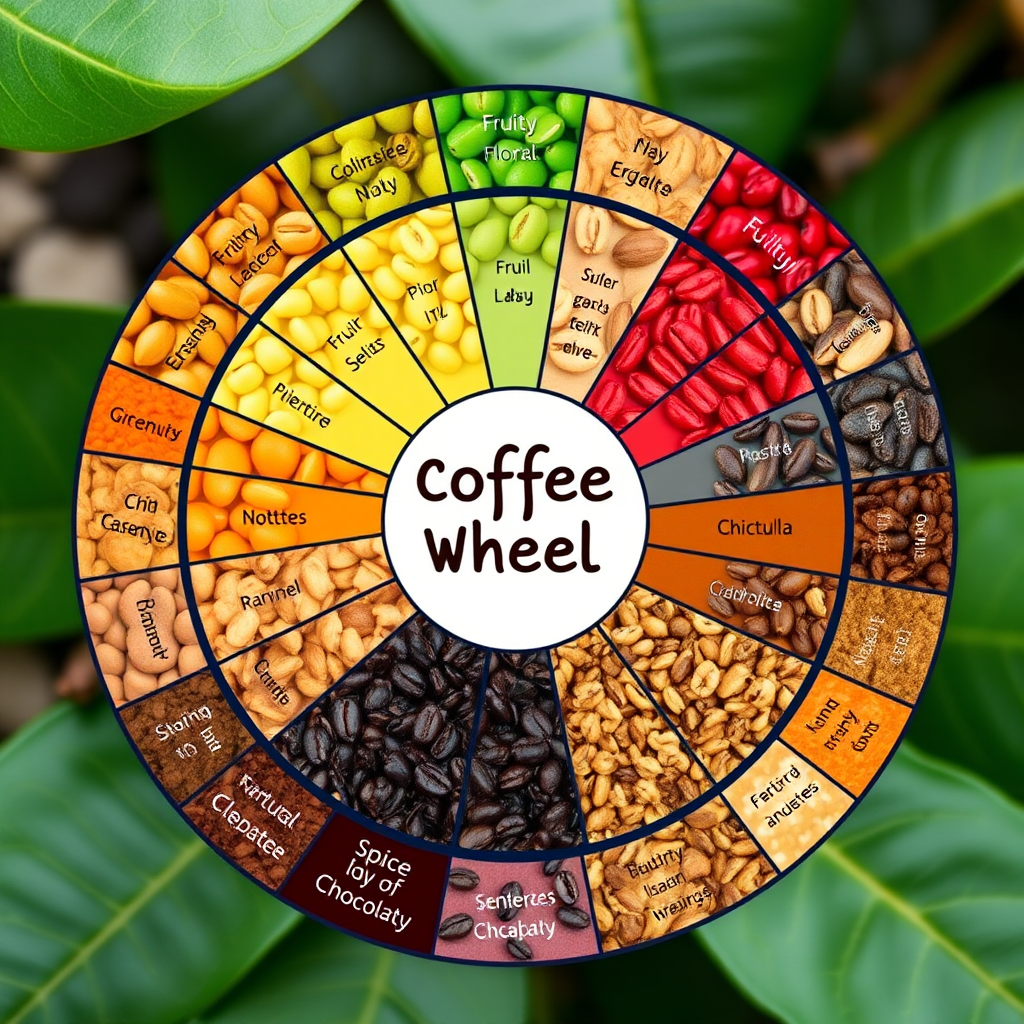
- Fruity: Berry, citrus, stone fruit, tropical fruit notes
- Floral: Jasmine, rose, lavender, or general floral sweetness
- Nutty: Almond, hazelnut, walnut, or peanut characteristics
- Chocolatey: Dark chocolate, milk chocolate, cocoa, or mocha flavors
- Spicy: Cinnamon, clove, pepper, or warming spice notes
- Earthy: Mushroom, forest floor, or mineral qualities
Tips for Improving Your Cupping Skills
Developing expertise in coffee cupping takes time and practice. Here are proven strategies to accelerate your learning and refine your palate:
Pro Tip from syndicainr
Cup the same coffee multiple times over several days. This repetition helps you identify consistent characteristics and understand how your perception changes with familiarity.
- Start with contrasting coffees: Begin by cupping very different coffees (light vs. dark roast, different origins) to train your palate to recognize major differences.
- Keep detailed notes: Write down everything you taste, smell, and feel. Over time, you'll develop your own vocabulary and reference points.
- Cup regularly: Consistency is key. Try to cup at least once a week to maintain and develop your sensory skills.
- Calibrate with others: Cup with experienced tasters when possible to compare notes and learn from their observations.
- Expand your flavor vocabulary: Taste other foods mindfully to build a broader sensory reference library.
Common Beginner Mistakes to Avoid
Even experienced coffee professionals made mistakes when starting their cupping journey. Here are the most common pitfalls and how to avoid them:
- Rushing the process: Take your time with each step. Proper cupping requires patience and attention to detail.
- Using inconsistent ratios: Always measure coffee and water precisely for reliable results.
- Ignoring water quality: Use filtered water with appropriate mineral content for accurate flavor assessment.
- Tasting too hot: Wait for proper cooling to avoid burning your palate and missing subtle flavors.
- Overthinking initial impressions: Trust your first instincts while remaining open to evolving perceptions.
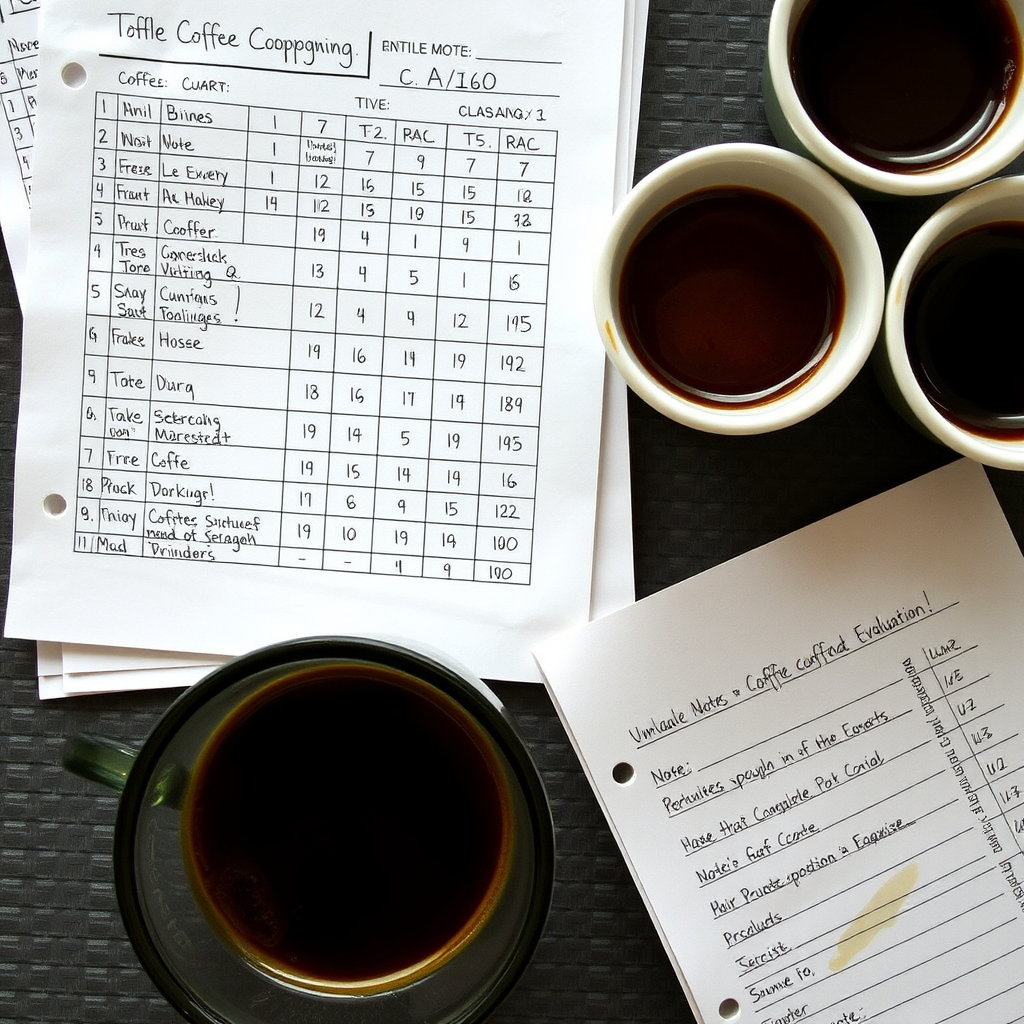
Taking Your Cupping Practice Further
Once you've mastered the basics, consider these advanced techniques to deepen your coffee knowledge:
Triangulation: Cup three samples where two are identical and one is different. This exercise sharpens your ability to detect subtle differences and builds confidence in your palate.
Blind cupping: Have someone prepare samples without revealing their identity. This removes bias and forces you to rely purely on sensory evaluation.
Origin comparison: Cup coffees from different regions to understand how terroir affects flavor profiles. This builds your knowledge of coffee geography and processing methods.
Processing method exploration: Compare washed, natural, and honey-processed coffees from the same farm to understand how post-harvest processing influences flavor.
Conclusion: Your Journey into Coffee Excellence
Coffee cupping opens a world of sensory discovery that transforms how you experience every cup. This systematic approach to tasting develops not just your palate, but your appreciation for the complexity and craftsmanship behind great coffee.
Remember that becoming proficient at cupping is a journey, not a destination. Each session builds upon the last, gradually refining your ability to detect and articulate the subtle nuances that make each coffee unique. Whether you're exploring single origins, comparing roast profiles, or simply wanting to better understand your daily brew, cupping provides the foundation for deeper coffee appreciation.
At syndicainr, we encourage all coffee lovers to embrace this practice. Start simple, be patient with yourself, and most importantly, enjoy the process of discovery. Your palate will thank you, and your coffee experience will never be the same.
Ready to Start Cupping?
Begin your cupping journey today with just a few simple tools and an open mind. The world of coffee flavor awaits your exploration, and every cup offers new discoveries for those willing to taste with intention and curiosity.